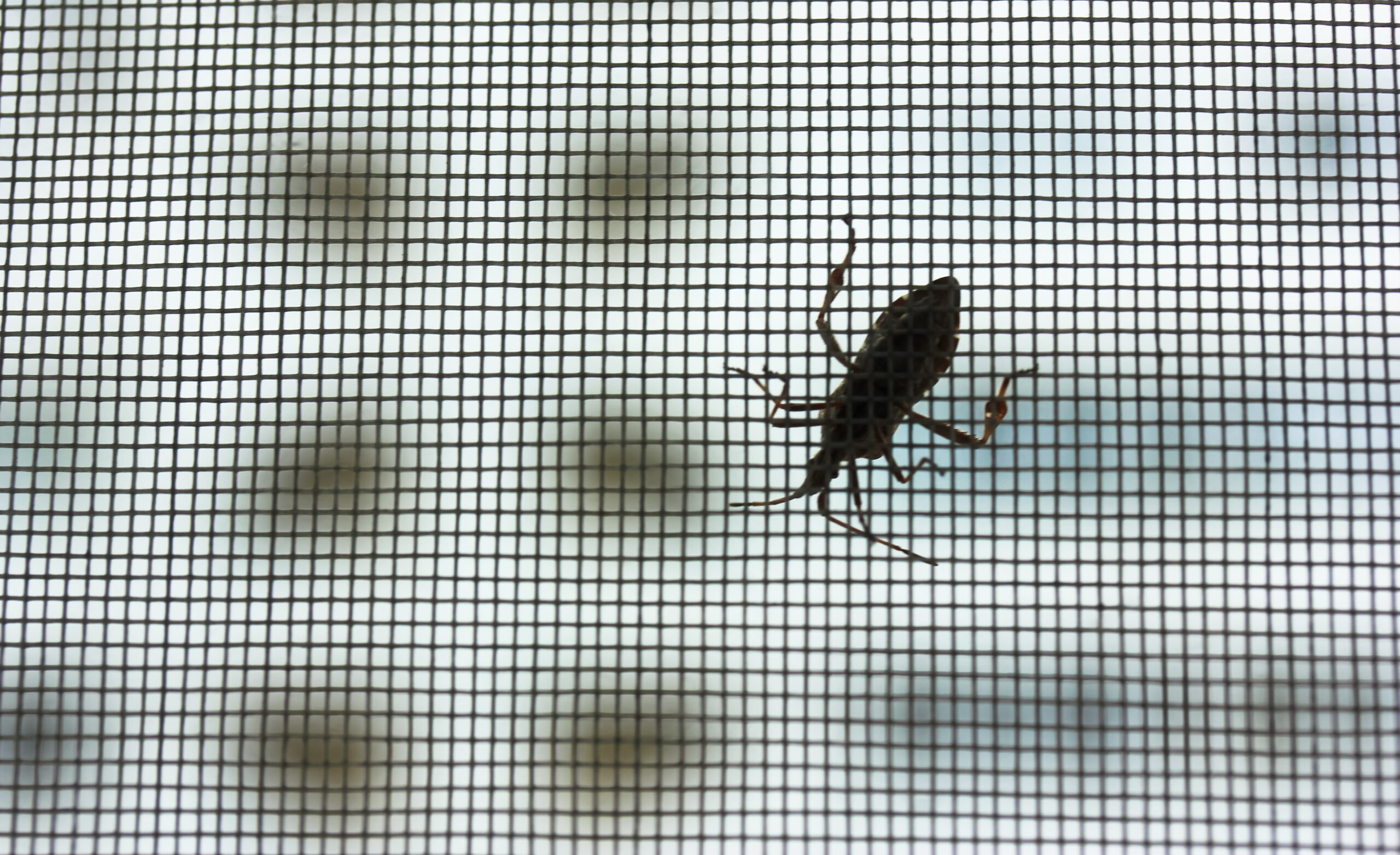On top of improving energy efficiency, sealing your windows is one of the most effective ways to keep bugs from getting into your home. Tiny gaps in your window frames, screens, or sashes are open doors for ants, spiders, beetles, and other unwelcome pests. Whether you’re dealing with seasonal invasions or persistent pest issues, understanding how bugs get in can help you figure out the best way to keep them out.
In this guide, you’ll learn how to inspect your windows for problem areas, what materials work best for sealing, when window replacement may be necessary, and how advanced window installation methods can help protect your home against both pests and the elements.
Table of Contents
Why and How Bugs Enter Through Windows
Bugs are opportunists. Even the smallest opening around your windows welcomes insects looking for warmth, food, or shelter. In older homes, wear and tear on window materials can create ideal conditions for pest intrusion. Here are the most common reasons bugs find their way in through windows:
- Gaps in window and door frames and sashes. Over time, wood or vinyl can shrink, shift, or warp, causing the frame to develop gaps that ants and other insects easily exploit.
- Cracks between the wall and window frame. Structural settling or shifting can pull the frame away from the siding or drywall, creating a narrow channel for pests.
- Damaged or missing screens. Torn mesh, loose frames, missing, or non-standard size window screens provide easy access for flying bugs, like mosquitoes and flies.
- Failed or dried-out caulking. Old or poorly applied caulk around the edges of the window frame can crack, and separate, creating gaps for pests.
- Loose or deteriorated weather stripping. This vital sealing material can wear out or come loose, especially on operable windows, giving bugs easy access.
- Unsealed weep holes and joints. These necessary drainage areas can double as hidden insect highways.
- Poor installation practices. Gaps left during the original installation or a rushed replacement job often go unnoticed until pests are indoors.
How To Regularly Inspect Your Windows for Entry Points
Before sealing your windows, it’s important to identify exactly where bugs might be getting in. Even small openings — less than 1/16 of an inch — can let ants, gnats, spiders, and other pests inside. A focused inspection now will save time and frustration later. Start by checking these common trouble zones:
- The corners of window frames are often the first spots where caulking fails or gaps appear due to frame movement or shrinkage.
- Where the window frame meets the siding or drywall, look for separation, cracks, or deterioration in this transition zone, especially on older homes.
- Remove screen edges and mesh, and carefully examine each window screen for rips, small tears, or warped frames that don’t sit flush.
- Weep holes at the bottom of window frames are drainage outlets that should be clear for water flow, but not so open that bugs can crawl through unchecked.
- Operable parts of the window (sashes, sliders, crank arms). Open and close each window to inspect weatherstripping and check for light gaps, air drafts, or loose fittings. Bugs can find their way in even through closed windows if there are hidden gaps around the frame, sash, or trim.
- Existing caulk lines. Run your finger along caulk beads to feel for flaking, drying, or cracks that compromise the seal.
- Finally, test for air leaks, which often indicate insect-sized gaps.

Schedule a Free Consultation
Get a free home window inspection, talk with one of our design consultants to get product recommendations, and learn about special offers and financing.
Sealing Your Windows From Bugs
Once you’ve identified where the bugs may be entering the house, sealing them properly can make a big difference in keeping them out. Here’s a step-by-step process to help you do it right.
Step 1: Clean the Window Area
Before applying any sealants or materials, thoroughly clean the window frame, sill, and surrounding surfaces to remove dust, cobwebs, and debris using a vacuum, brush, or cloth. Clean surfaces allow adhesives, caulks, and weatherstripping to bond properly.
Step 2: Repair or Replace Window Screens
Reattach loose or sagging screens and repair window screen holes by patching or replacing damaged screens entirely, ensuring the screen frames fit tightly into the window opening with no gaps along the edges. This lets you enjoy fresh air without letting flying insects inside. For extra protection, consider upgrading to a finer mesh that blocks smaller bugs without restricting airflow.
Step 3: Apply Weatherstripping to Movable Parts
For sliders, double-hung sashes, or other movable windows, apply adhesive-backed foam or rubber weatherstripping along the contact edges to prevent drafts and insects from entering where the sashes meet the frame.
Step 4: Seal Gaps With Caulk
Use high-quality exterior-grade caulk (silicone or latex, depending on the window frame material) to seal around the outside perimeter of the window frame where it meets siding, trim, or stucco. On the interior, caulk where the frame meets the wall to fill any gaps. Smooth the bead with a damp finger or caulk tool for a clean finish. For best results, follow the manufacturer’s instructions on curing time and application techniques to ensure a lasting, weather-tight seal.
Step 5: Consider Insulation Film or Barriers
For older or drafty windows, consider applying a clear plastic window insulation kit to the inside during bug season. It reduces air movement and creates another layer that insects can’t cross.
Step 6: Check Flashing and Drip Caps
Examine the exterior flashing and drip caps above your windows. These help redirect water away from the frame, but they also block flying insects from nesting behind the trim. Repair or reinstall any loose or deteriorated flashing.
Step 7: Consider Replacement Windows
If you find excessive rot, failing caulk that won’t hold, or constant air leaks even after sealing, it may be time for a professional window replacement. Newer windows are built with tighter seals and integrated barriers that resist both water and pests.
Signs It’s Time to Replace Your Windows Rather Than Seal Them
Sealing can be an effective first step to keeping insects out of your home, but it’s not always enough. When windows are damaged, outdated, or improperly installed, sealing becomes a short-term fix for a much bigger issue. In these cases, replacement is often the only reliable way to fully eliminate the gaps that insects use to get inside. Here are the signs it’s time to consider window replacement:
- Visible rot or warping means your window frames have already been compromised by moisture. These soft, deformed materials create direct access points for insects and weaken the structure around the window.
- Persistent air leaks, even after caulking or applying weatherstripping, suggest that there are deeper structural problems that sealing alone can’t fix. Bugs can slip through these invisible gaps just as easily as air.
- Moisture between panes indicates a failed window seal, which affects both energy performance and pest resistance. The trapped condensation can also attract bugs looking for damp, enclosed areas.
- Loose-fitting or rattling windows usually can’t form a tight seal. These misaligned frames and sashes create enough space for even large insects to get through.
- Old or outdated window designs often lack modern sealing features, like compression gaskets or factory-installed weatherstripping, making them far more vulnerable to infiltration.
- Recurring bug infestations near the same window, especially after you’ve attempted sealing, point to deeper issues with the frame or surrounding wall that require a full replacement.
- Spongy or crumbling window sills are a red flag for internal water damage and rot, which often leads to hidden gaps behind the trim that bugs can easily access.
- Sticking or non-functional sashes prevent windows from closing properly, leaving uneven gaps along the edges that insects are quick to exploit.
- Visible mold or mildew around the window indicates long-term moisture problems and compromised or worn-out seals. These conditions make it easier for bugs to enter and harder for sealing products to hold.
Bug-Repelling Benefits of Modern Replacement Windows
If sealing isn’t solving the problem, modern replacement windows offer long-term benefits by closing off the hidden gaps and weaknesses that bugs exploit. Today’s windows are built with advanced materials and engineered features that make them far more effective at pest control than older window systems.
- Integrated weather barriers are built into the frame and sash design, creating a continuous seal that resists both air leakage and insect intrusion, even in tight corners and moving window parts.
- Fusion-welded or factory-sealed frames eliminate seams and joints where bugs commonly enter, unlike older windows that rely on caulked or mechanically fastened corners.
- Factory-installed weatherstripping is precisely fitted at the time of manufacturing, ensuring consistent compression that blocks even the smallest insects from squeezing through operable sections.
- Improved drainage systems direct water away from the home while preventing bugs from nesting in or entering through weep holes and sill tracks. Improved drainage systems help prevent water from pooling around the frame, which can otherwise become a breeding ground for bugs and mold.
- High-performance framing materials, like composite, fiberglass, and engineered vinyl, resist swelling, shrinking, and warping, which helps maintain a tight seal over time.
- Low-maintenance cladding and finishes prevent moisture buildup and exterior rot, reducing the chance that bugs will find soft spots to burrow into around the window.
Why Call a Professional For Window Sealing or Replacement
DIY sealing can be helpful for small, visible gaps, but many bug problems come from issues like frame separation, internal rot, or misaligned sashes that aren’t easily fixed. Without the right tools, materials, and training, it’s easy to overlook critical entry points or leave gaps that sealants and weatherstripping can’t fully cover. A trained window contractor knows how to spot these issues early and apply materials correctly for lasting protection.
At Lake Washington Windows and Doors, we take that protection even further with our exclusive Leak Armor Installation. If pests keep finding their way inside despite your sealing efforts, it may be time to bring in a professional and seal your home the right way-from the frame out.
How Leak Armor Installation Helps Prevent Future Infestations
Leak Armor is our exclusive, multi-layered installation method developed to protect your home from water damage, energy loss, and long-term structural issues. It combines commercial-grade materials with precision craftsmanship, including flashing, sill pans, sealants, and insulation, to form a continuous, airtight seal around every window and door. While Leak Armour’s primary purpose is to block moisture, it also offers powerful defense against insect intrusion by sealing the very gaps bugs rely on to enter. Here’s how it helps keep bugs from entering:
- Self-adhesive flashing is applied around the entire window or door opening to seal tiny cracks where insects could enter between the frame and the wall.
- Applied sill pans form a sealed basin beneath the window that blocks pests from slipping in through the bottom corners or drainage points.
- Polyurethane sealants are used around all seams, joints, and edges to form a flexible, weather-tight, and bug-tight barrier.
- Custom-measured installation ensures every window fits precisely within the rough opening, eliminating the small gaps that unwanted pests often exploit.
- Layered protection from flashing, pans, and insulation helps close off every potential entry point, especially in vulnerable areas like corners, tracks, and weep holes.
Backed by a 10-year warranty, Leak Armor doesn’t just seal out the rain. It provides lasting protection against bugs and other nuisances. For homeowners in the Pacific Northwest, it’s the smart way to secure your investment and enjoy year-round peace of mind.
Ready To Stop Bugs at the Source?
Sealing windows can go a long way to keep bugs from coming inside, but for long-term protection, nothing beats expert installation with built-in barriers. Whether you need help identifying problem areas, replacing outdated windows, or protecting your living space from future intrusions, Lake Washington Windows and Doors is here to help.
Schedule a free consultation today to get a professional window assessment, personalized product recommendations, and information on current promotions or financing options. Let’s make your home more comfortable, efficient, and pest-free, starting at the window.










